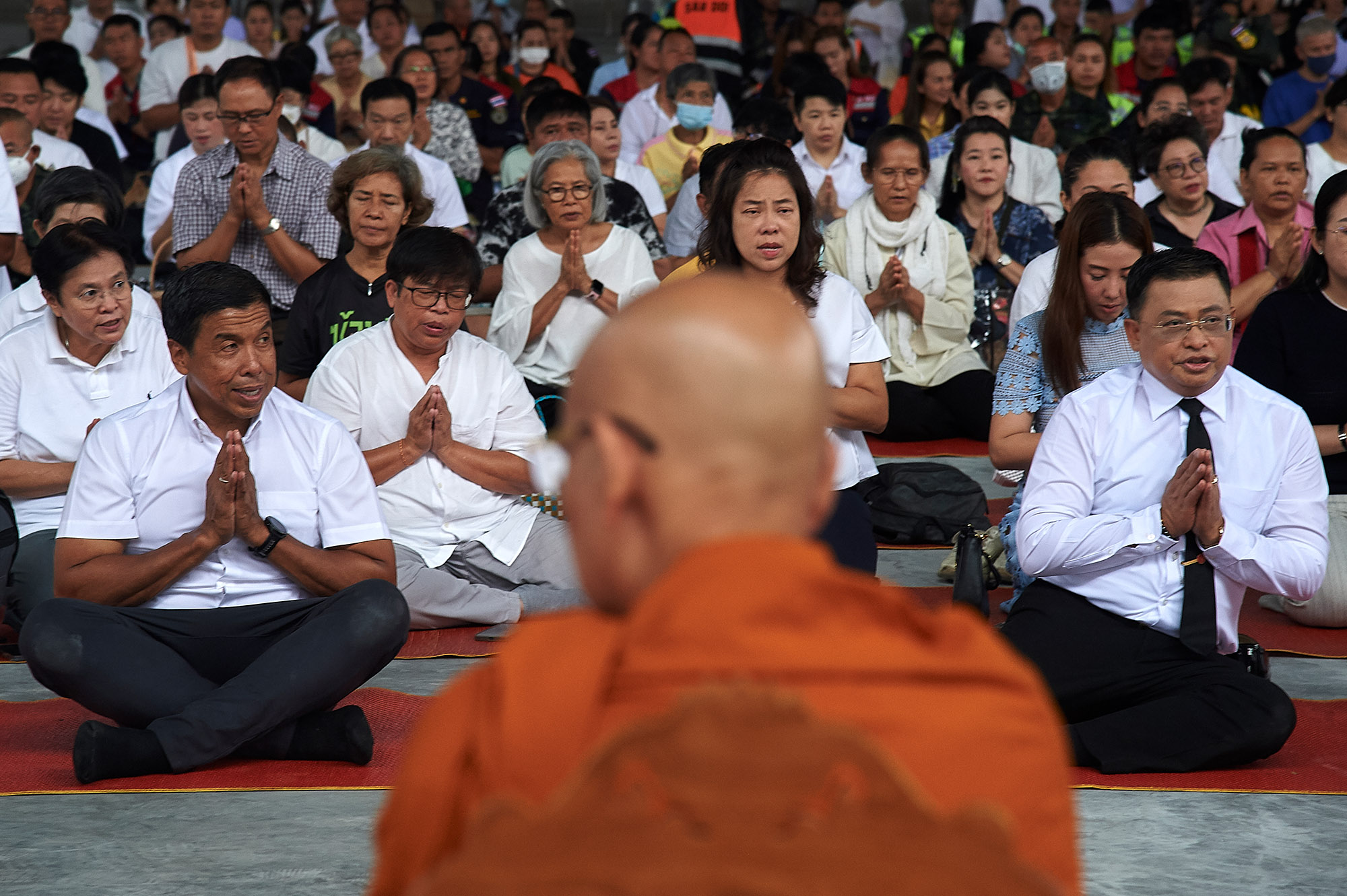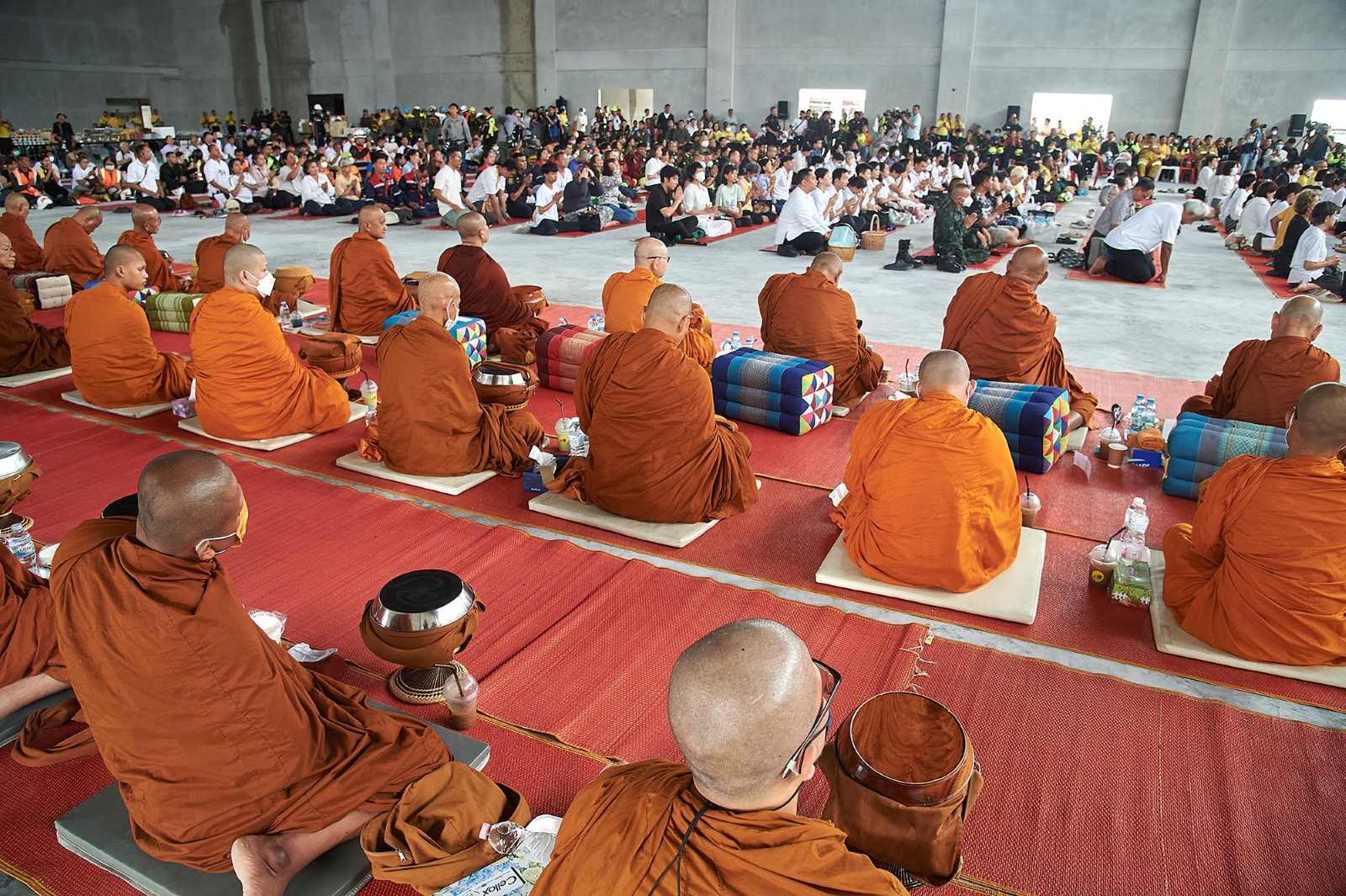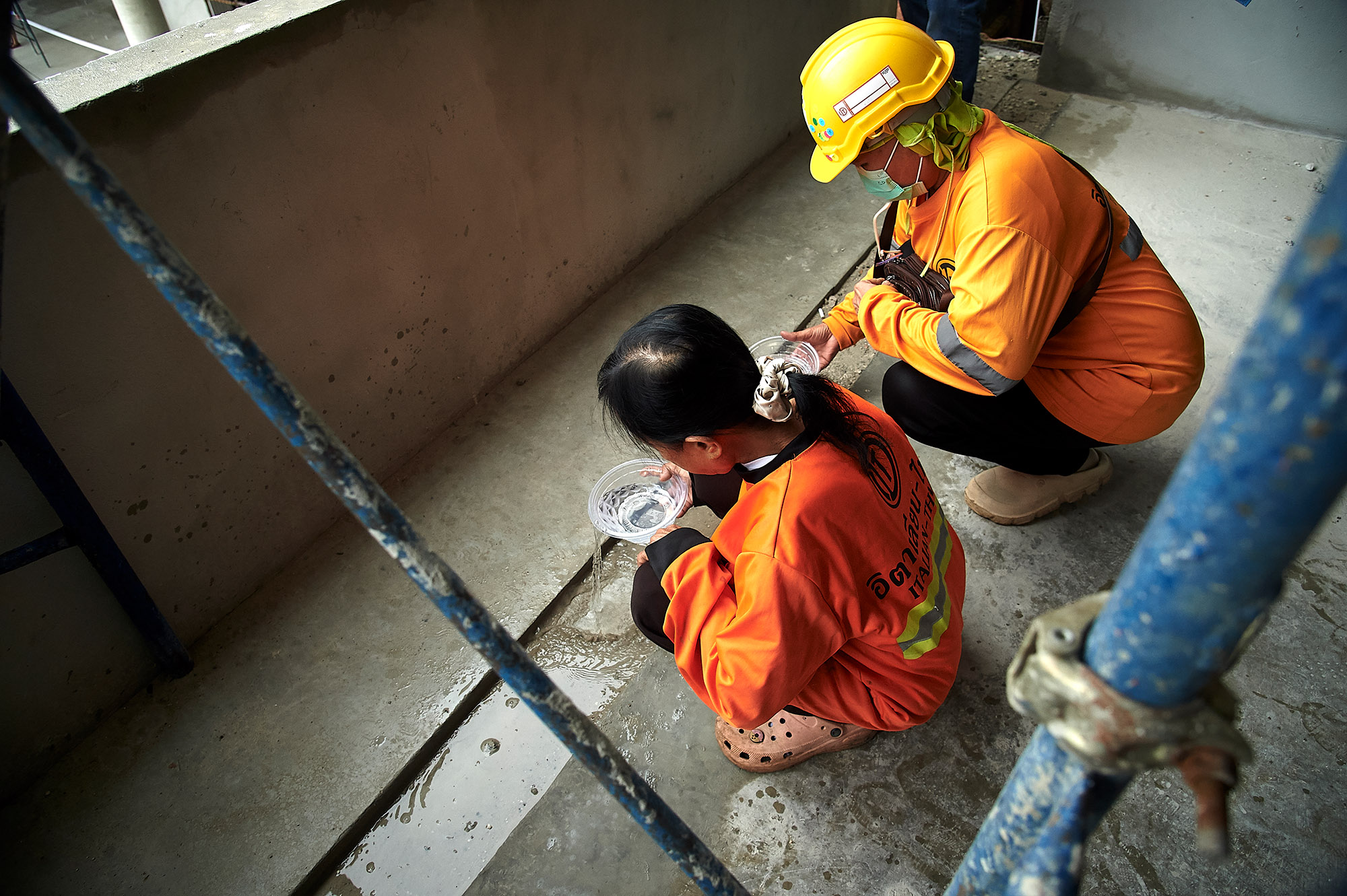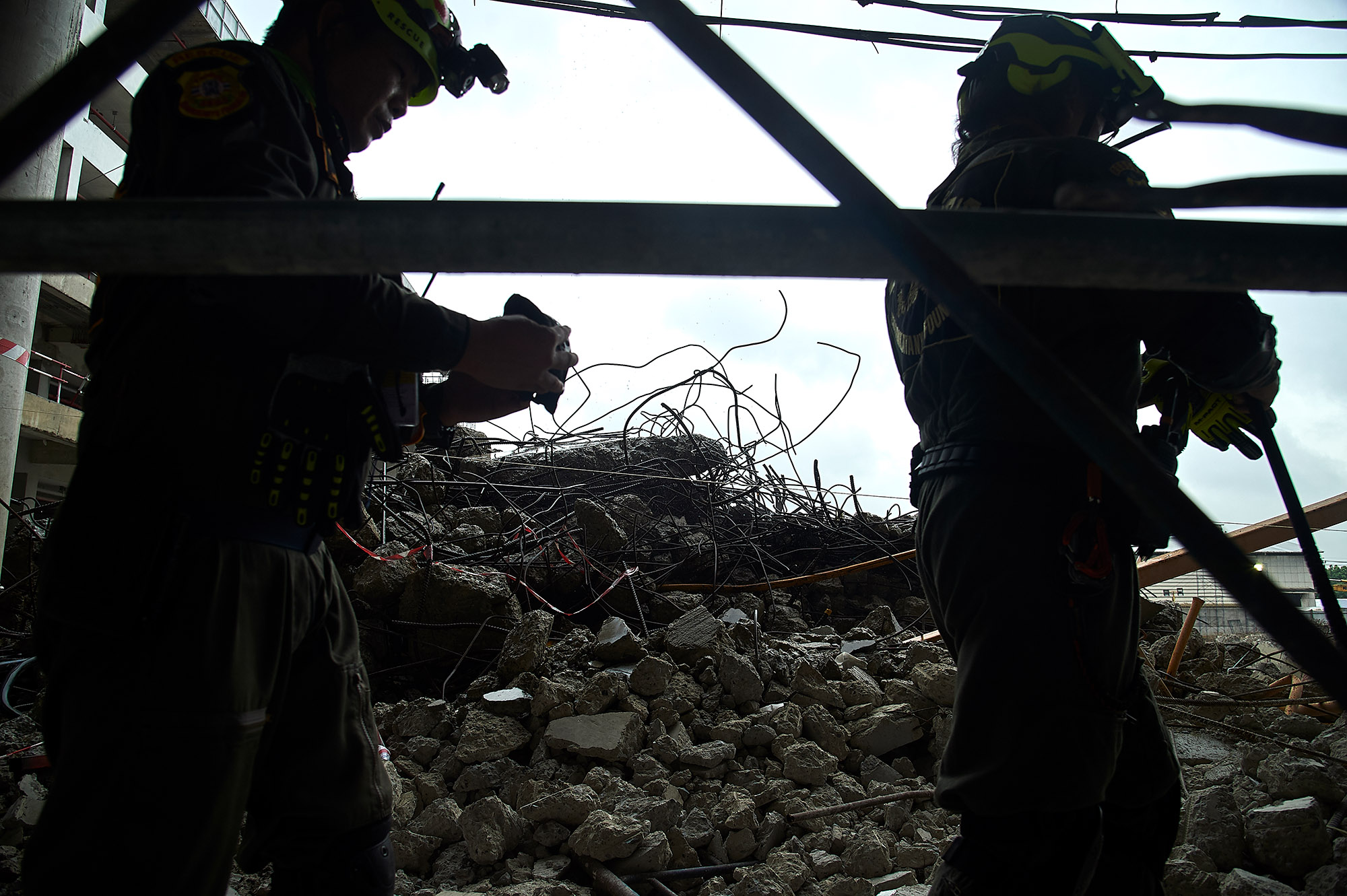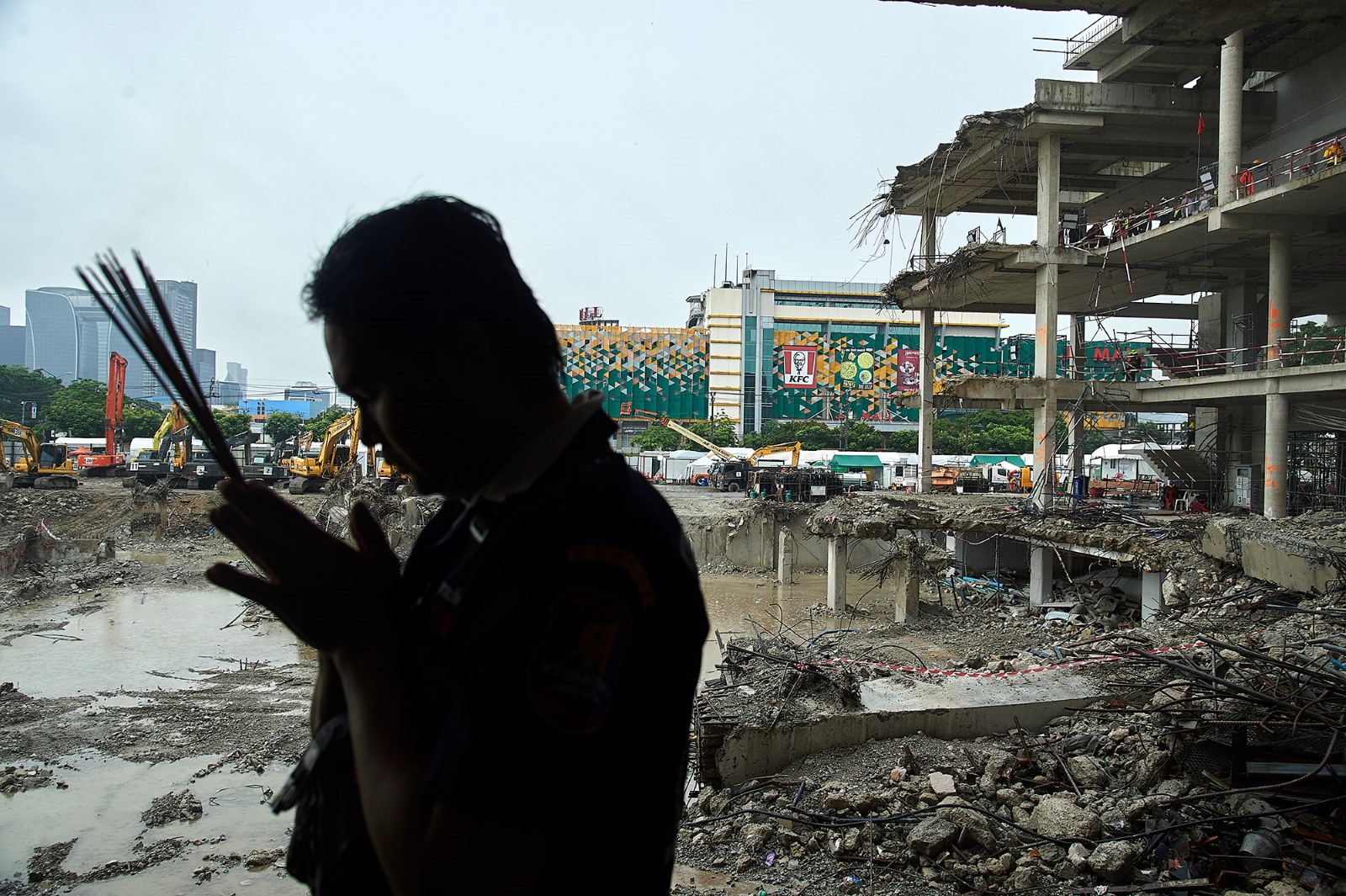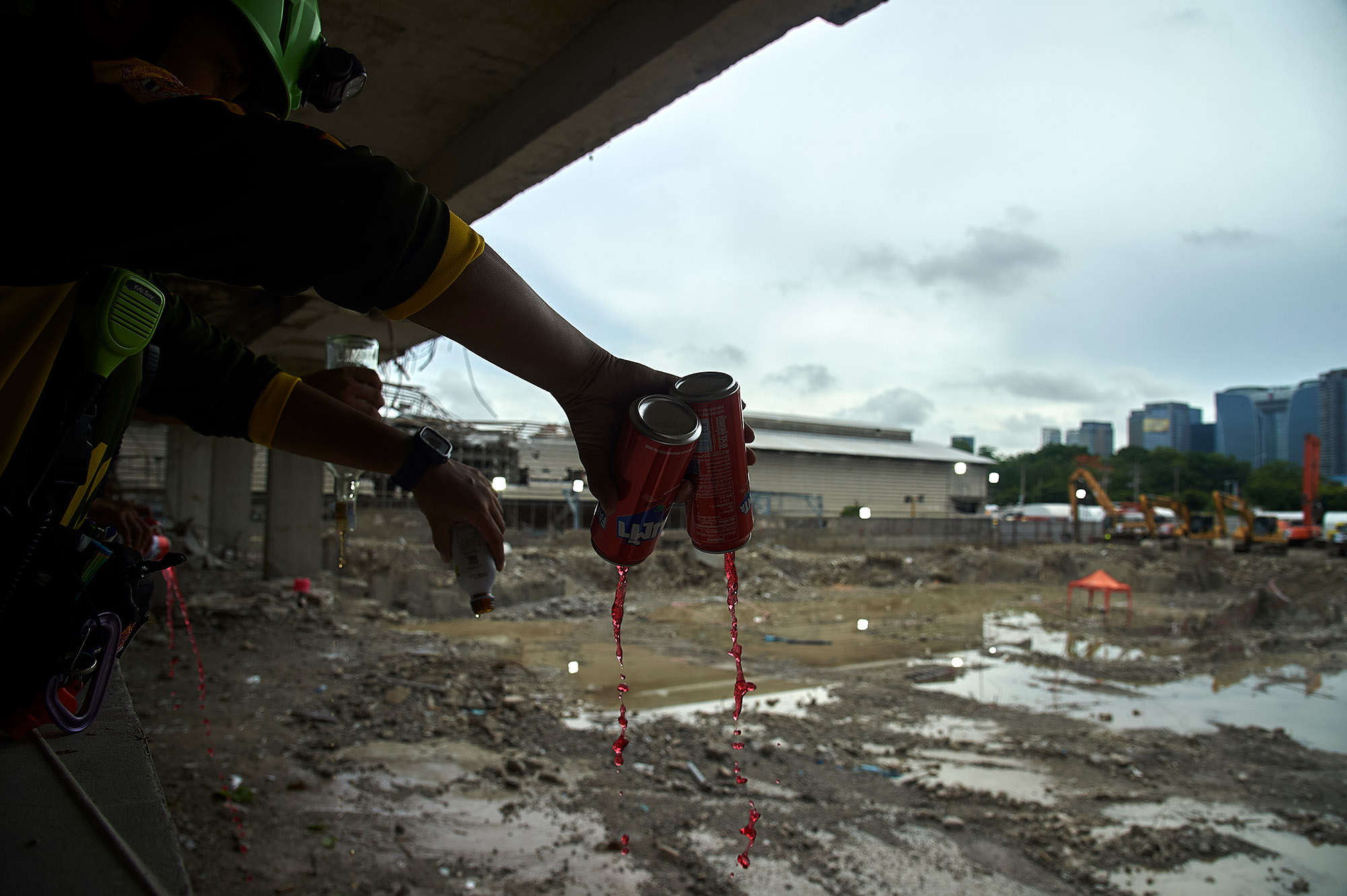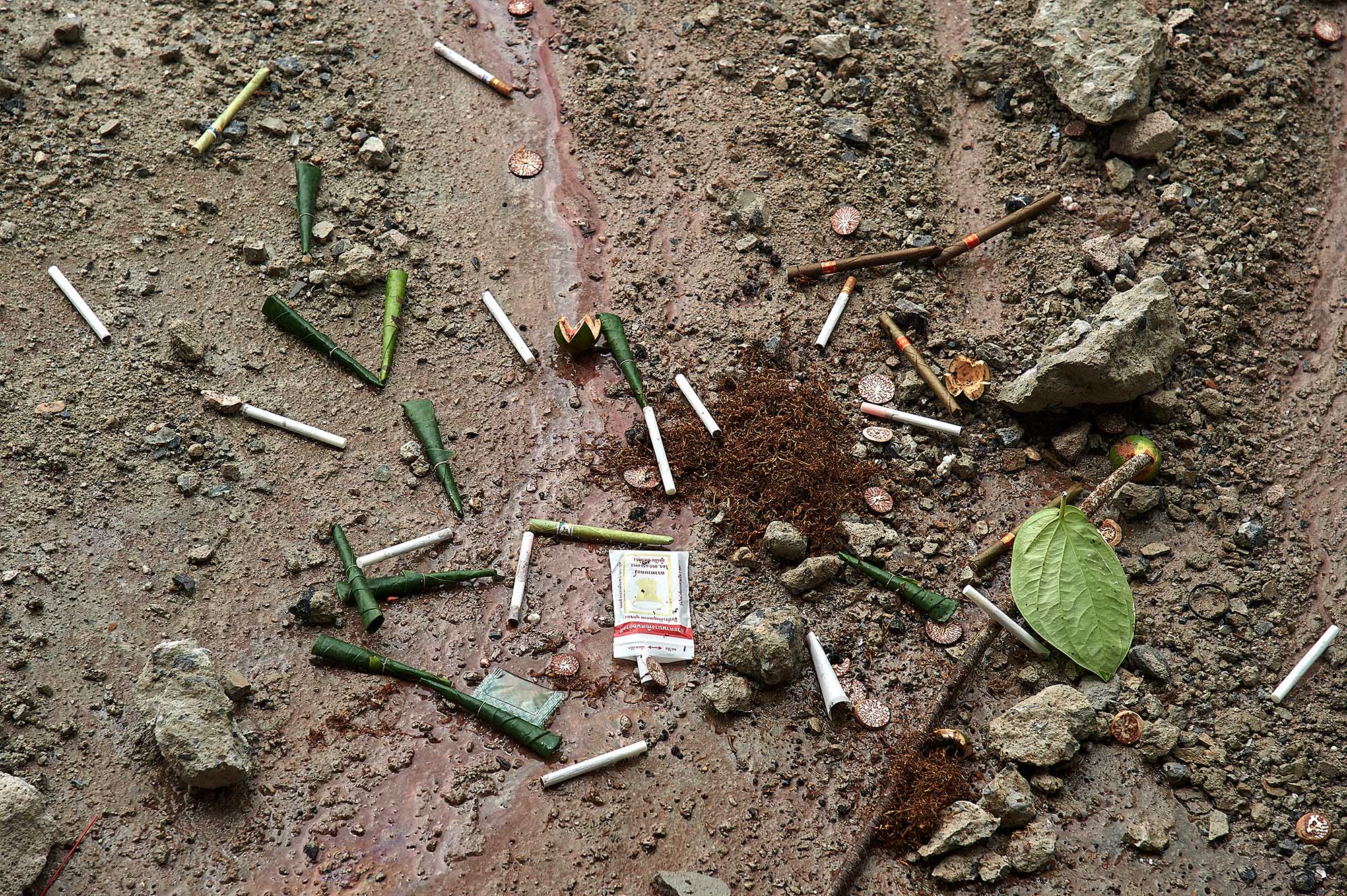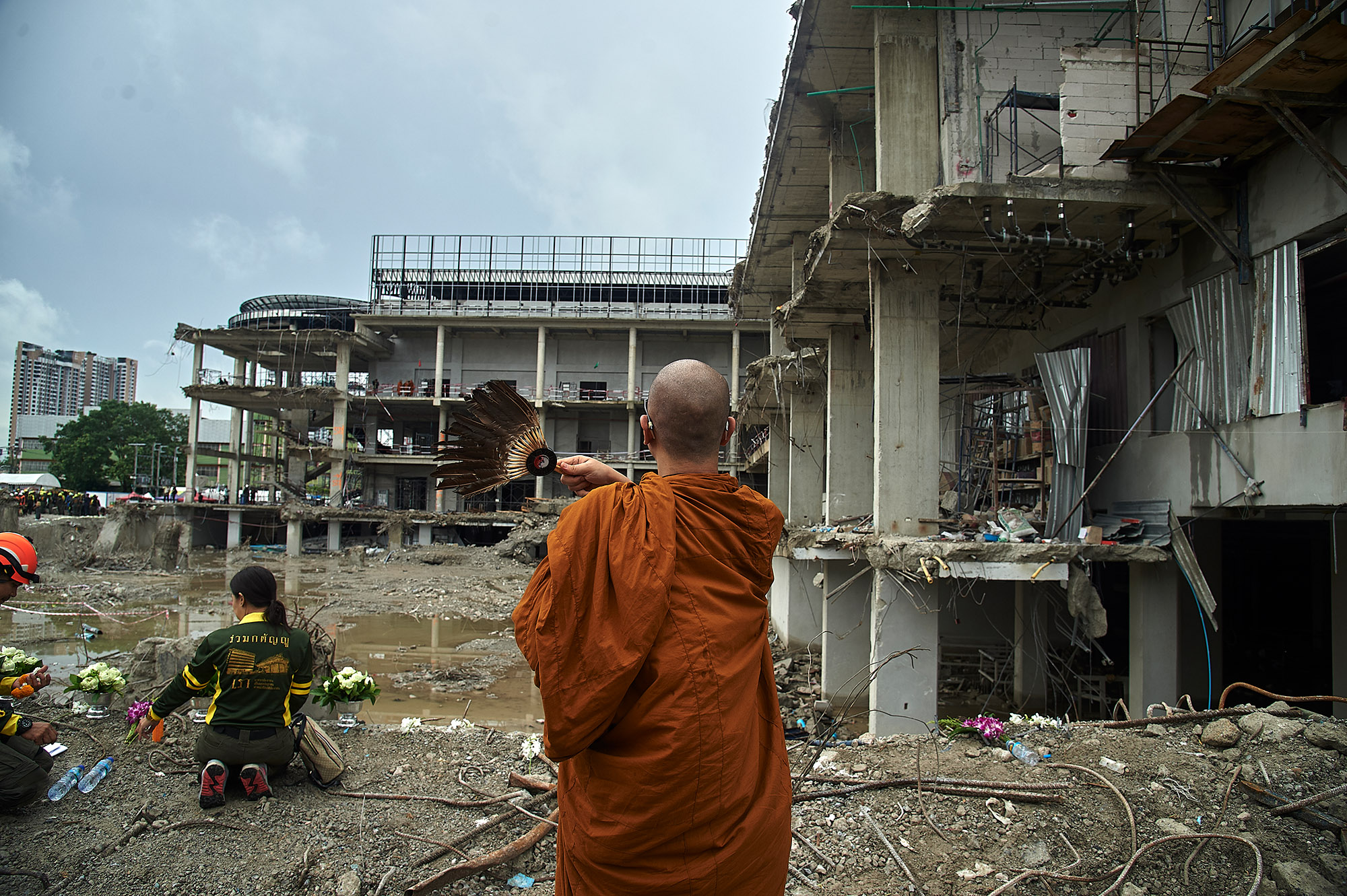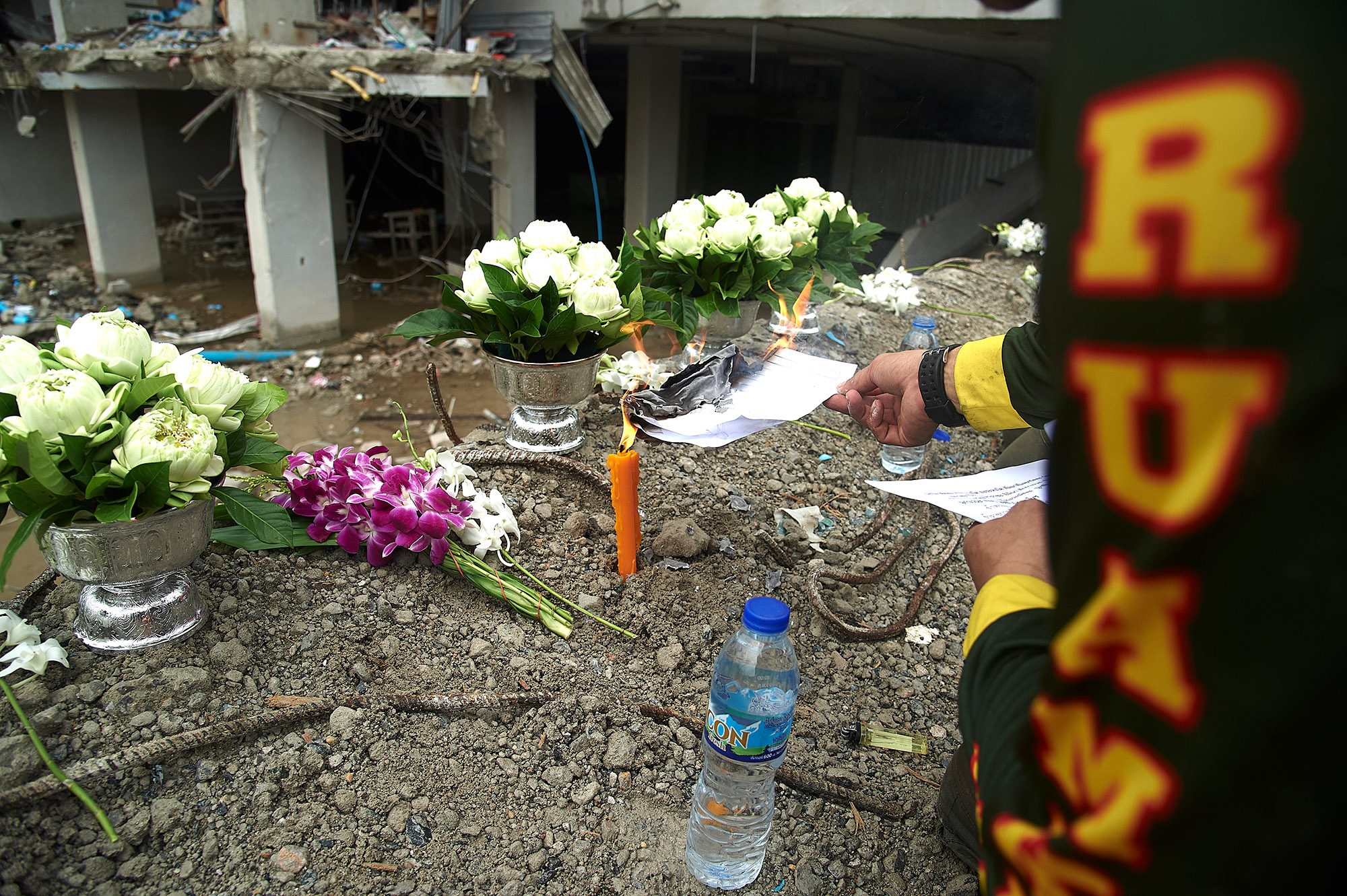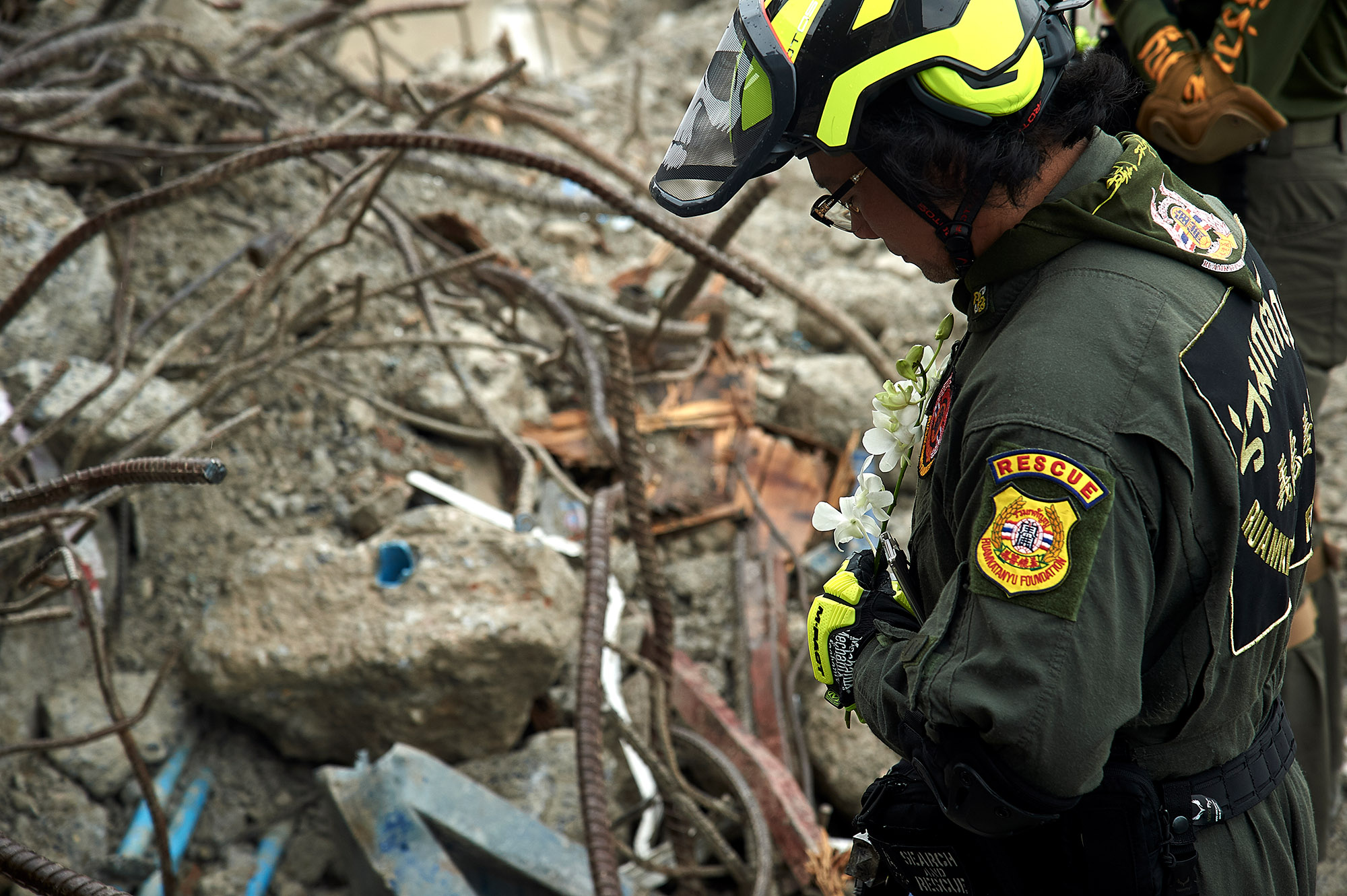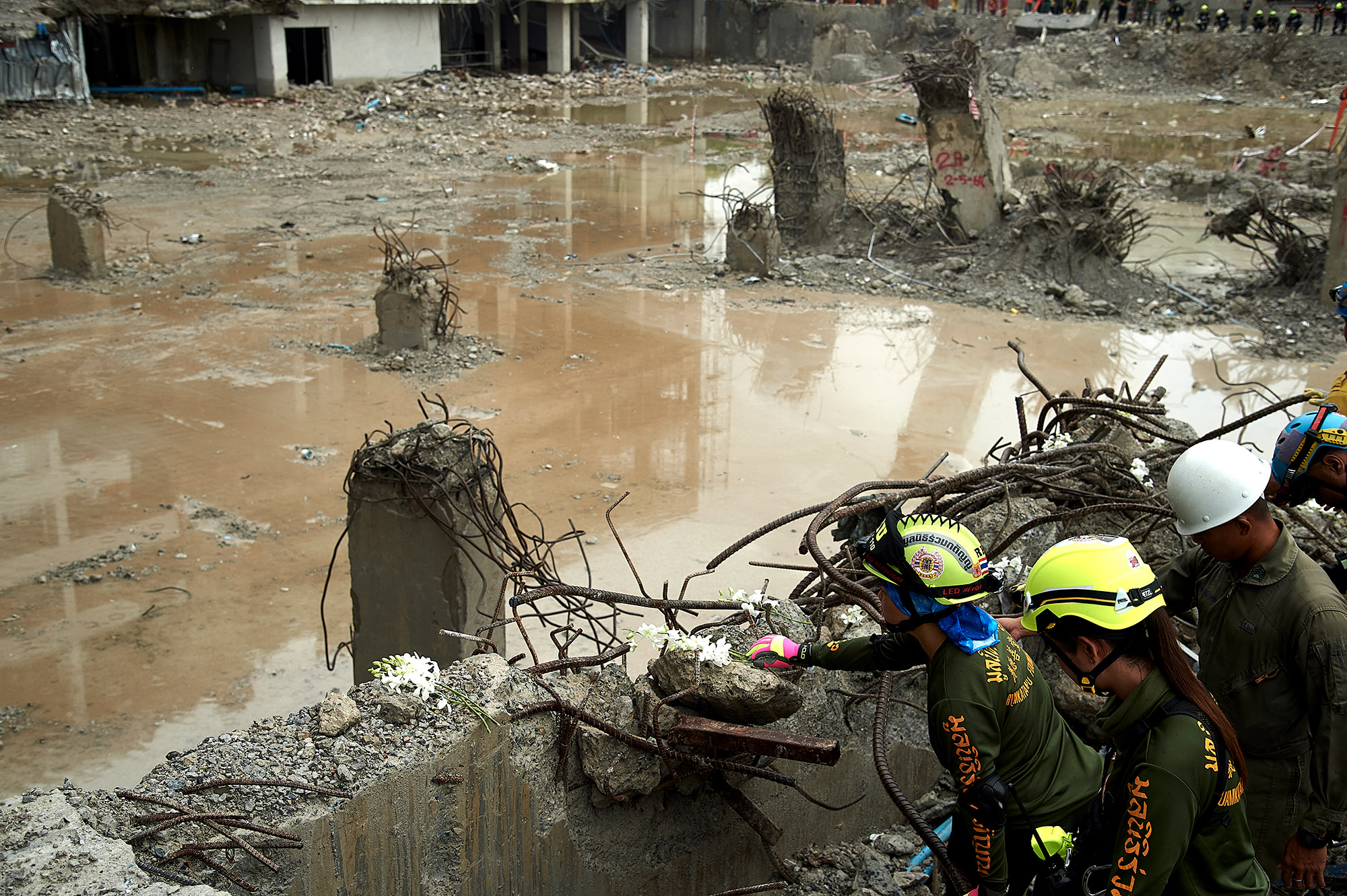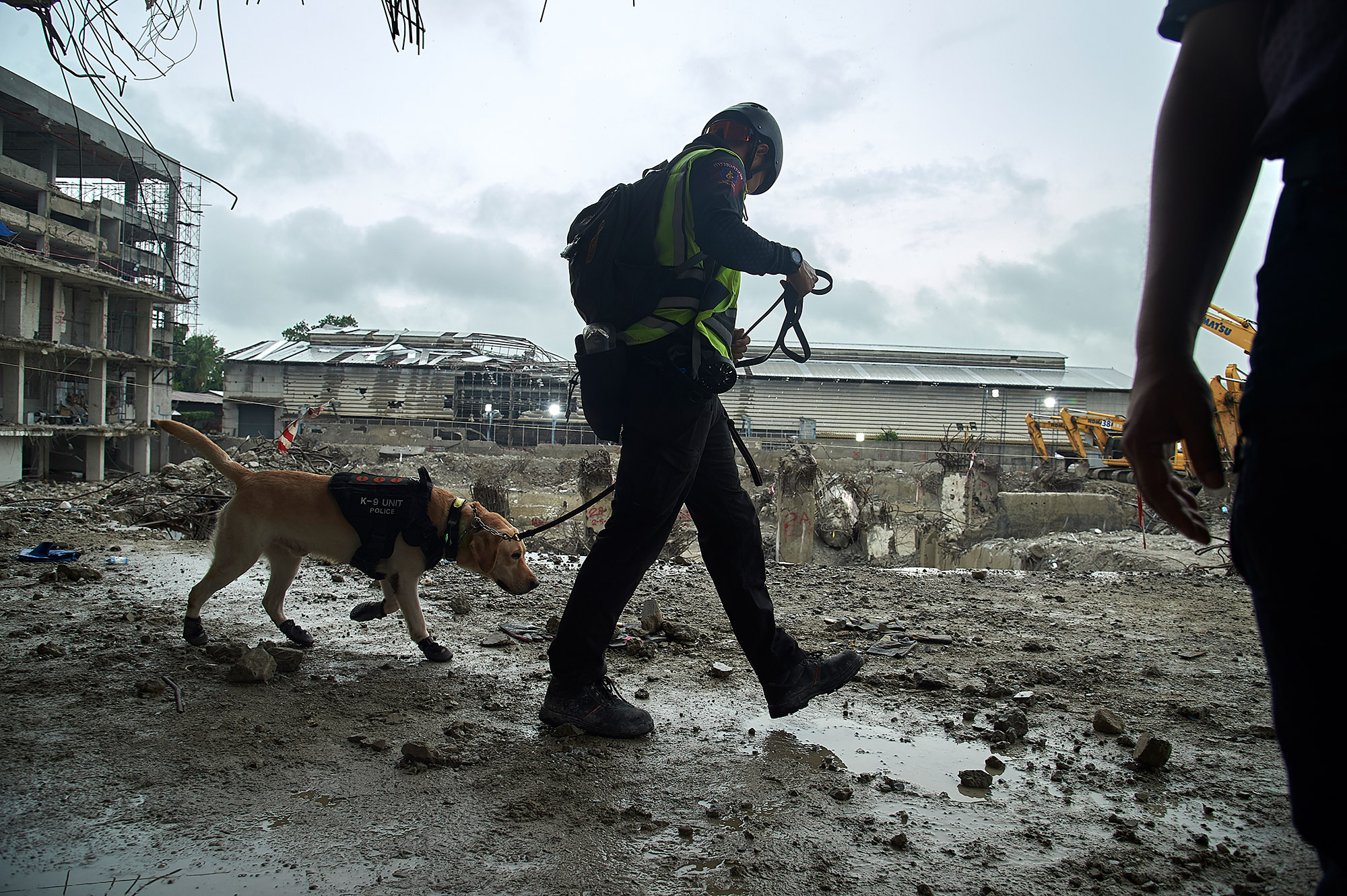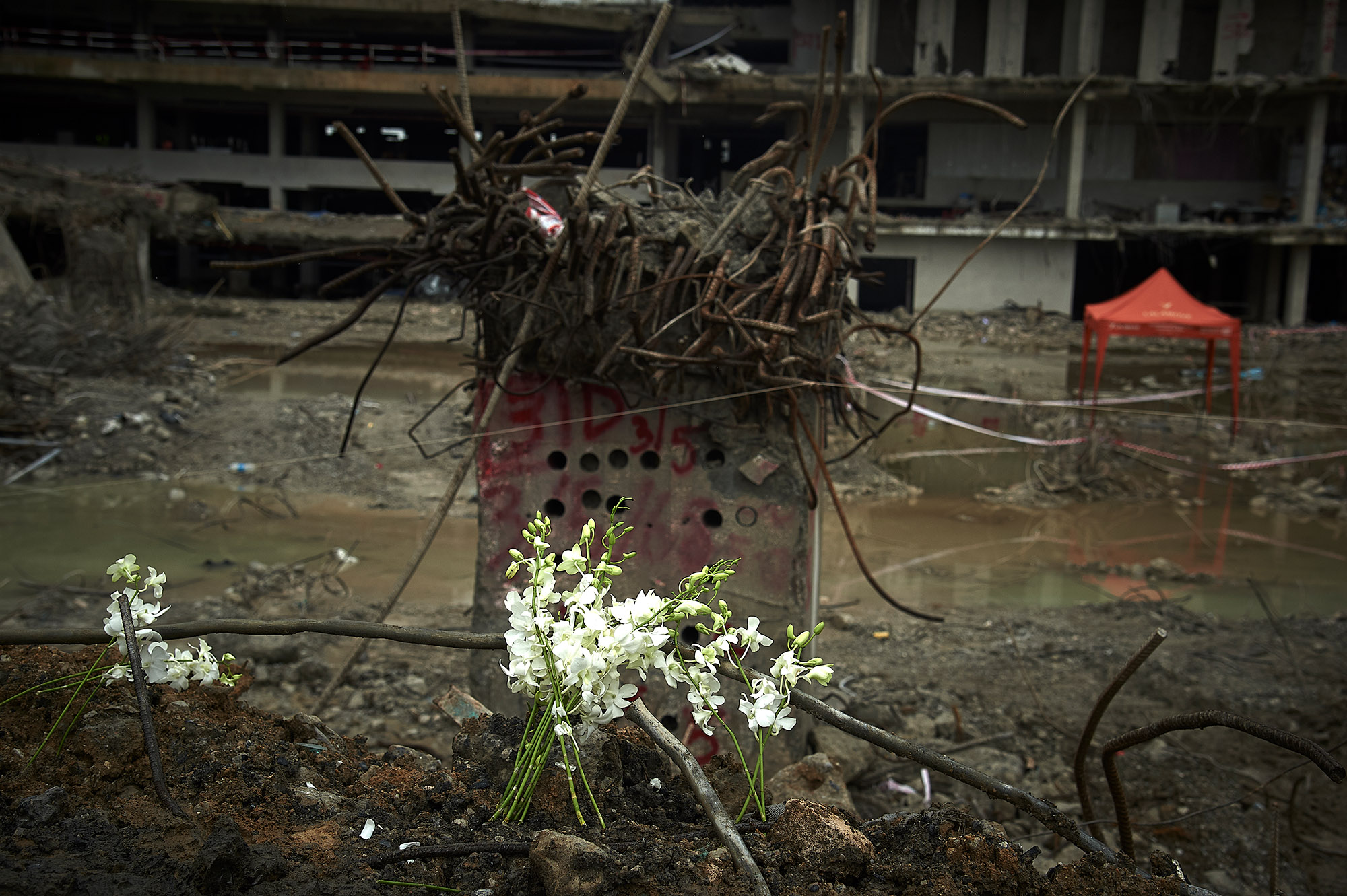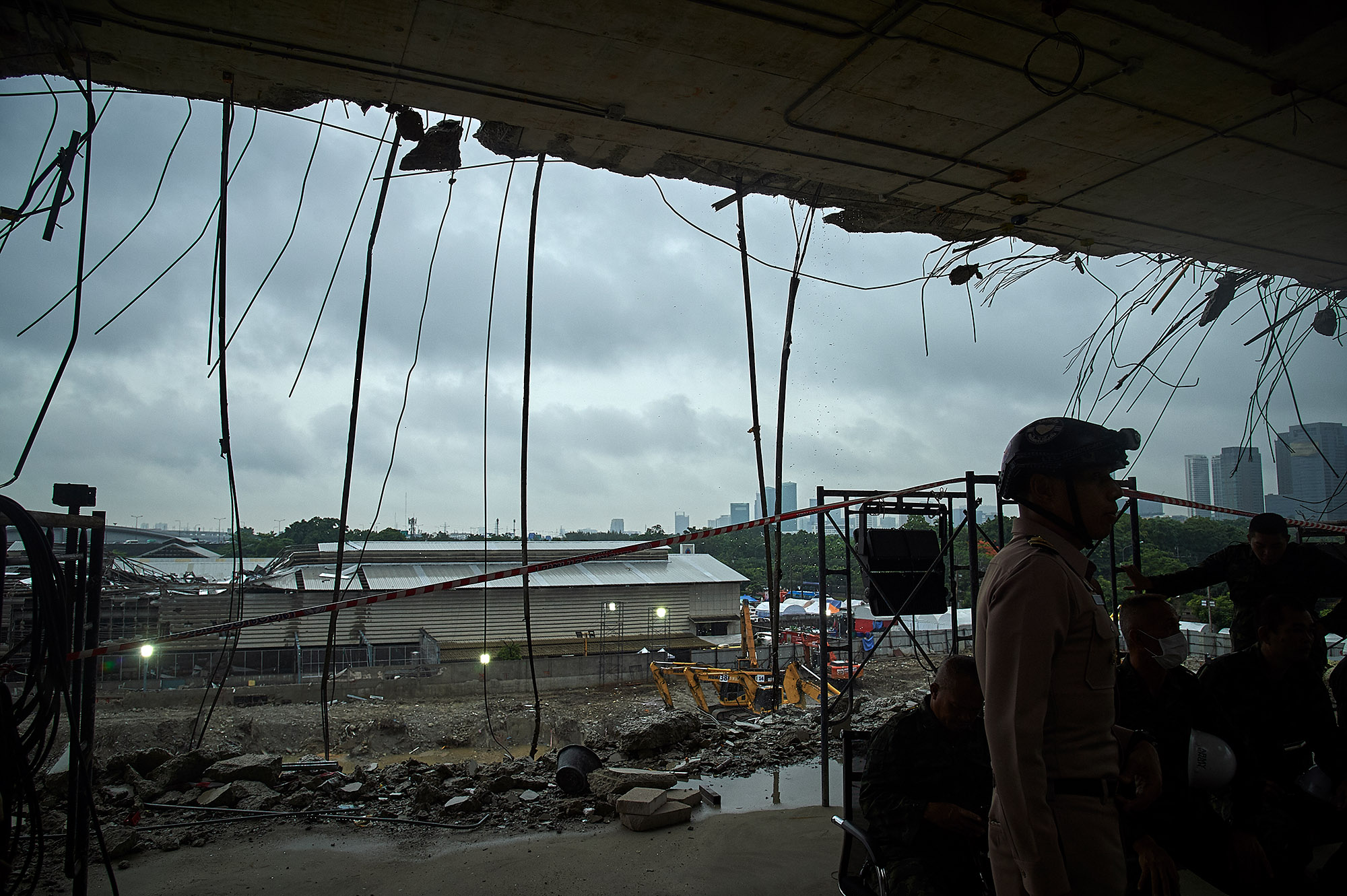
It was drizzling. The sky was overcast, and the air was damp. The Bangkok Metropolitan Administration (BMA) decided to move the alms-giving ceremony to 89 monks, the number of people who are registered as dead at the collapsed SAO core building, inside the remaining structure.
The event to make merit for the dead proceeded in a vast hall for a short while before ending amid the absurdly silent morning. The next religious ceremony to pray for the dead and bless the living so they can move on with their lives was then held.
Soon after Somdet Phramahathirachan, an abbot of the royal-patroned Wat Phra Chetuphon Wimonmangkalaram (Ratchaworamahawihan) temple, who chaired the event along with Bangkok Governor Dr. Chadchart Sittipunt, arrived, he led 109 monks to chant. Monk chanting then broke the atmosphere, soothing all the souls there, including 52-year-old Saengkham Annakhon, a plasterer who has still not found her husband since the 7.7 Sagaing Earthquake shook the capital and this building on March 28.
The religious ceremonies held yesterday mark the end of the month-long search and rescue operations, after running for 46 days since the earthquake struck. The BMA announced the closing of its operations and its command centre. It plans to hand over the site to the State Audit Office and concerned officials tomorrow (May 15) to proceed with further matters, including a series of investigations into irregularities of the construction of the building and businesses involved.
Among tens of thousands of major and high-rise buildings in the city, there was only this 30-storey under-construction State Audit Office building that couldn’t withstand the earthquake and had collapsed as a result.
Leading earthquake experts and engineers have registered it in the new world’s records as the highest building, which was shaken and completely collapsed to the ground by an earthquake, which was farthest.
International rescuers who came to help in the search and rescue operations, meanwhile, have dubbed it as being among the most challenging incidents in the world. Not only had the building collapsed in thick layers of floors like pancakes, but the victims were scattered between the floors all over the building.
As a result, only 9 out of 105 of them have narrowly survived. 89 are registered as dead (9 assembled from collected parts of bodies), while 7 more are still missing, including Saengkham’s husband, who had worked on the 4th floor of the building before it had collapsed.
The forensic police have so far been able to identify 86 of them and returned their bodies that remain to their relatives, while there are still 3 individuals left to identify, plus nearly 300 parts of bodies that the forensic police have not yet been able to assemble and identify who they were.
Ms. Saengkham said she has hardly been able to make up her mind to accept her husband’s situation up until today, and is concerned that he would be permanently missing, given the final first floor he was last seen before the building collapsed.
The search and rescue team said they have done their best and tried to search for the victims in every nook and corner as they removed piles of wreckage and reached the ground floor already. They decided to call it quits last Friday following their detailed search using K9 canine dogs to sniff in the area. What is also feared is that the unstable ground could collapse. There are a few underground floors left to be unearthed.
Dr. Chadchart said there are crucial lessons learned from the incident especially disaster preparedness involving urban search and rescue (USAR). Thailand has performed well at a medium level, and this needs to be upgraded to be a heavy one like other international teams. Specific equipment and management, he added, is also needed, including hi-tech drones to help locate victims. However, he praised the spirit of Thai rescuers and other supporters, who joined hands to help one another in times of crisis. This, he also said, should be carried along and strengthened.
“BMA was just a tiny part of the operations. We were flooded with assistance coming from several agencies and organisations, and this is our strength in times of crisis.
“If there is anything as a lesson learned, I wish that we take this incident seriously, so that we can improve our disaster preparedness and response to be better at handling disasters that nobody wants to see happen again,” said Bangkok Governor Dr. Chadchart.
Read: Rescuers rush against time as they enter final hours of those trapped in collapsed under-construction building in Chatuchak/ IN PICTURES: 7th Day of 7.7 Earthquake, “Little Hope” still Lingers
